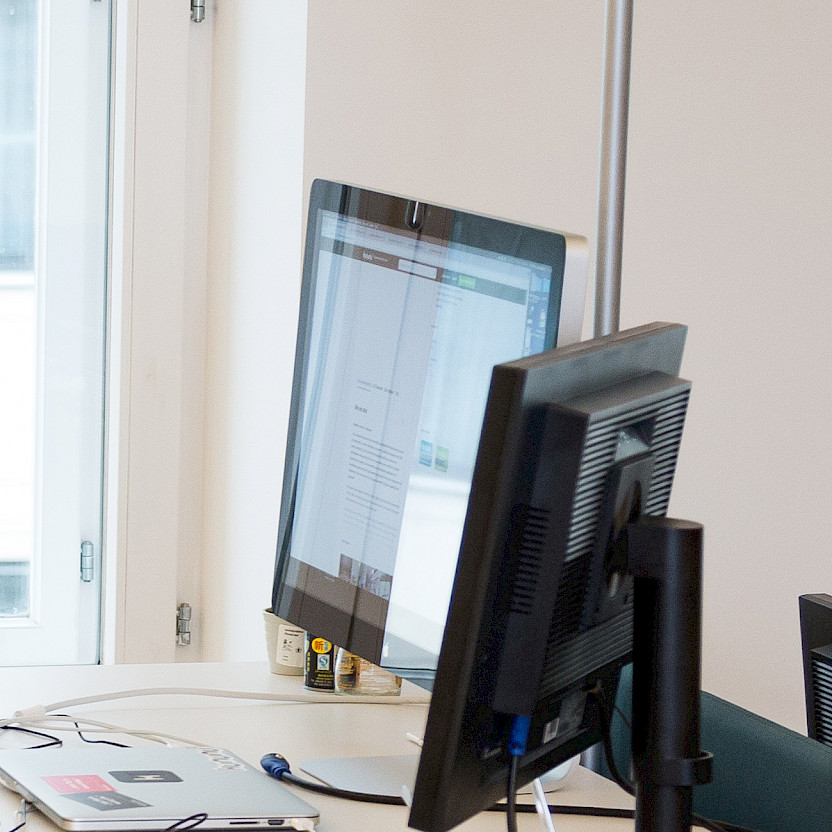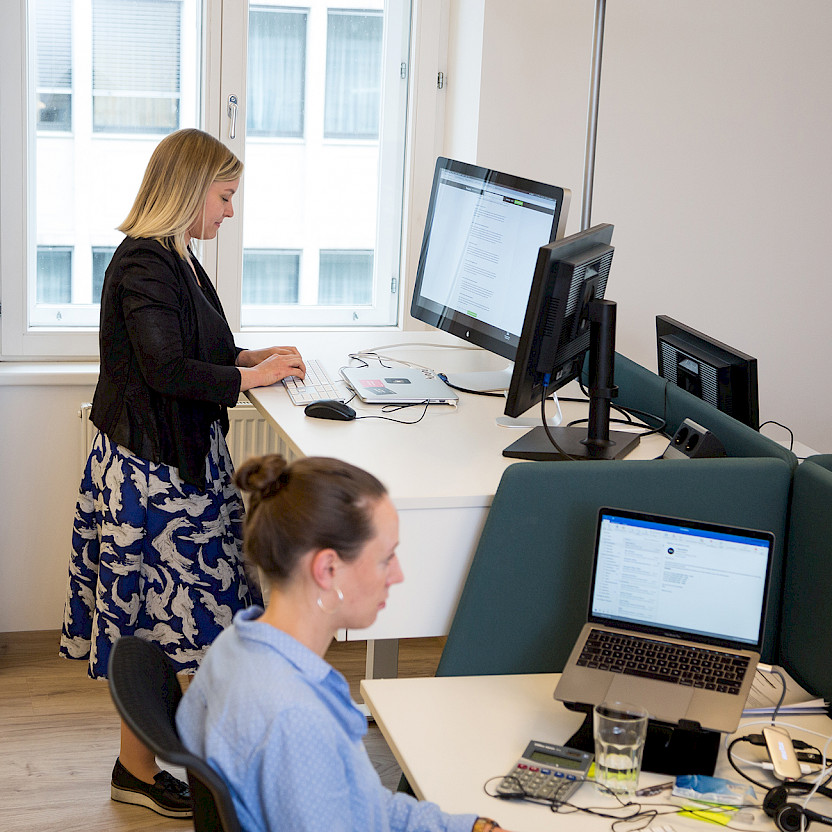Switching between sitting and standing is good for the health. But does it also affect productivity? This question was investigated by a team from the Texas A&M Health Science Center in the USA.

The research design:
The study’s participants
For this study, 167 employees (118 women, 49 men) of a call centre operating in the area of health advice and clinical consultation were divided into two groups. The intervention group of 74 individuals worked at desks where they could switch between sitting and standing. The control group of 93 individuals worked at desks that could only be used in a seated position.
The assessment scale
The number of successfully conducted calls per working hour was used to evaluate the employees’ productivity. This evaluation was carried out on every day of the experiment, which lasted for six months. Records were also kept of how often and how long the individual employees sat or stood during their total work time. Finally, the test persons were asked at the beginning and at the end of the experiment to assess their sense of physical well-being.
The results:
- During the entire duration of the six-month experiment, the participants in the intervention group were 46% more productive than their colleagues in the control group.
- The intervention group worked in a seated position during 73% of their working time. On average, the control group worked in a seated position during 91% of their working time.
- After the experiment was over, three quarters of the individuals in the intervention group said that their sense of physical well-being had improved as a result of the opportunity to work in a standing position more often.
Note: The authors of the study point out that these effects could be smaller in a other working environment. For example, individuals who deal with health issues in their work might take advantage of the opportunity to occasionally work in a standing position more readily than other employee groups.



Information about the study
The research findings can be downloaded at Taylor & Francis Online.
Responsible for the study: Gregory Garrett, Mark Benden, Ranjana Mehta, Adam Pickens and S. Camille Peres, Department of Environmental & Occupational Health, Texas A&M Health Science Center, and Hongwei Zhao, Department of Epidemiology & Biostatistics, Texas A&M Health Science Center, Texas
Publication: April 2016
—-
Photography in this article: IBA (Photography at kununu GmbH, Vienna)




